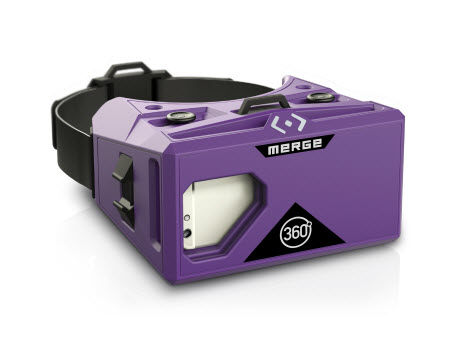Investors Bank on Virtual Reality

MORE FROM THE VR SPECIAL REPORT: Meet the VR Headsets | Littlstar Builds VR Content Constellation
Virtual reality and 360-degree video are currently just a small segment of the market, but they’re gathering plenty of attention, and piles of cold hard cash, from investors looking to place bets on the Next Big Thing.
The good news for VR is that the segment is teeming with startups that have built or are developing products and content for a market that, by some estimates, is poised to explode. Goldman Sachs thinks VR and AR (augmented reality) could generate up to $182 billion in revenue (content, software and hardware) by 2025, and eclipse TV revenue.
Some large companies have already placed sizable bets. Facebook paid $2 billion for Oculus, a company at the forefront of the market. Microsoft has been spending heavily and getting lots of buzz for an augmented reality initiative that centers on the HoloLens. Secretive AR/VR startup Magic Leap recently raised a monster-sized $800 million “C” round.
And we’re still waiting to find out what Apple’s play will be. CEO Tim Cook said on the company’s earnings call last month that he doesn’t view VR as a geeky niche. “It’s really cool and has some interesting applications,” he said, an indication that Apple won’t be sitting on the sidelines for long.
VR has also attracted attention from the pay TV industry. Comcast Ventures, Comcast’s VC arm, has announced investments in three startups focused on VR content and technology: AltSpaceVR, NextVR and Baobab Studios, a company specializing in animated virtual reality content.
Multichannel Newsletter
The smarter way to stay on top of the multichannel video marketplace. Sign up below.
“We’re excited about virtual reality as well as augmented reality,” Gavin Teo, a principal at Comcast Ventures said. “Going forward, we’re going to continue to invest in this space.”
Comcast Ventures hasn’t said where else in the sector it might splash some cash, but cinematic virtual reality and gaming are two content genres the VC firm could explore in 2016 and 2017, Teo said.
VR market growth will mirror that seen by mobile, Teo said, because it’s tapping into such existing distribution forms as over-the-top video and mobile app stores. The next question is how the storytelling and content-creation tools will evolve for filmmakers and game creators.
“I think 2015 was the year that the technology got there,” he said. “It was a good [year] for camera hardware and transport hardware. 2016 will be the year where you start to see consumer adoption of headsets.”
VR appears poised to go mass market in 2017 or 2018, he said. “But I think there is a market today, and business models are starting to take shape.”
The Gear VR and Google Cardboard viewers are already available, while more advanced platforms such as Oculus Rift, HTC Vive and Sony PlayStation VR will hit the market later this year.
Privately funded Merge Labs released its foam-based, $99 Merge VR viewer in November 2015. It hopes to draw a mass audience, but is keeping its future financial plans under wraps. The company has received “a bit of interest from traditional investors and private-equity investors” pursuing the VR sector, company co-founder Andrew Trickett said. “We’ll keep trucking along and executing with our heads down. We’ll consider them [funding opportunities] as they come in front of us.”
Merge Labs isn’t releasing sales data, but “we have demand exceeding supply … We’re also getting swamped [with inquiries] from brick-and-mortar stores. They are seeing that VR is going to be hot.”
